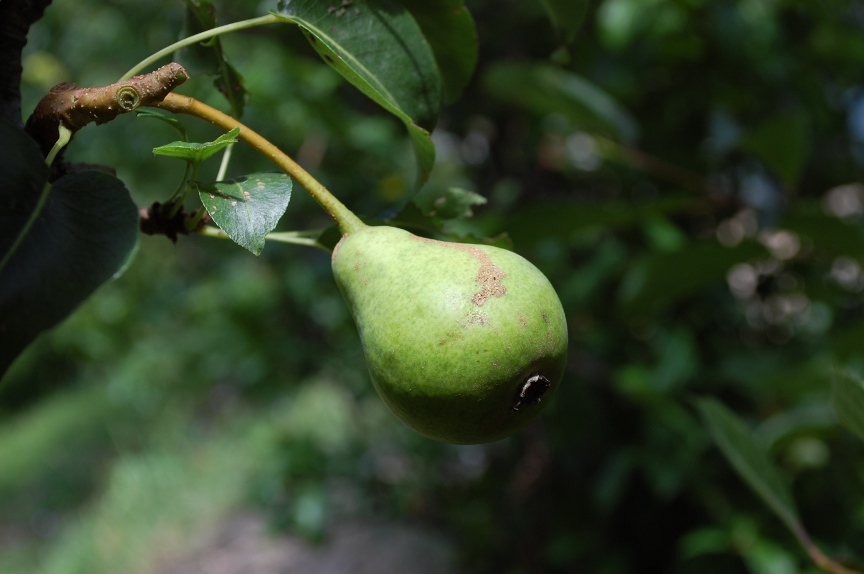︎︎︎ PERA
DI S. PIETRO

Le piante madri sono state ritrovate nel comune di Pietralunga (PG). Era diffusa anche nelle vicine Marche. Può essere adatta alla coltivazione nelle zone di alta collina. L’albero molto vigoroso, rustico e a portamento espanso, è assai produttivo e fiorisce tardivamente. Il frutto é molto piccolo, piriforme, con il peduncolo lungo e mediamente grosso. La cavità calicina è inesistente. La buccia è spessa, di colore verde brillante, al tatto ruvida, per la presenza delle lenticelle piccole e evidenti. La polpa è bianca, succosa, con granulosità accentuata. I frutti in montagna maturano intorno alla metà di luglio e si mangiano subito; infatti non si conservano a lungo, anche se sono piuttosto resistenti alle manipolazioni e al trasporto. Deve il suo nome proprio al periodo di maturazione. È un piccolo frutto che si presta a molte lavorazioni. Adatto alle conserve e alla essiccazione al sole, solo diviso a metà, senza aggiunta di zucchero. È adatto alla conservazione sotto zucchero o sciroppatura. Mettendo in un barattolo di vetro le pere intere con il loro picciolo e lavate, si aggiunge lo zucchero a coprire la frutta, si chiude bene e si mettono al sole per 40 giorni. Oppure si può procedere alla sciroppatura consueta con la bollitura e sterilizzazione.
The mother plants were recovered in the area of Pietralunga (Perugia). This variety was also widespread in the neighboring Marche. It would be suitable for cultivation even in the high hills areas. The tree is generally vigorous, hardy and with a spreading habit. It is quite productive and blooms late. The fruit is very small, pear-shaped, with a long and typically thick stem. The calyx is absent. The skin is thick, bright green, and coarse because of its small but marked lenticels. The flesh is white, juicy and quite granular. The fruits growing on the mountain mature around the middle of July and should be eaten immediately; in fact they don’t store long even though they travel well. It owes its name to the time of maturation, on Saint Peter’s day in July. It is a small fruit good for processing. It is suitable for jams and for sun drying, cut simply in half, without the addition of any sugar. It is suitable for preserving in sugar or syrup. This can be done by placing the pears whole with their stem in a jar and covering them up with sugar and closing the jar shut and placing the jar in the sun for 40 days. The syrup can also be obtained through traditional boiling and sterilizing.